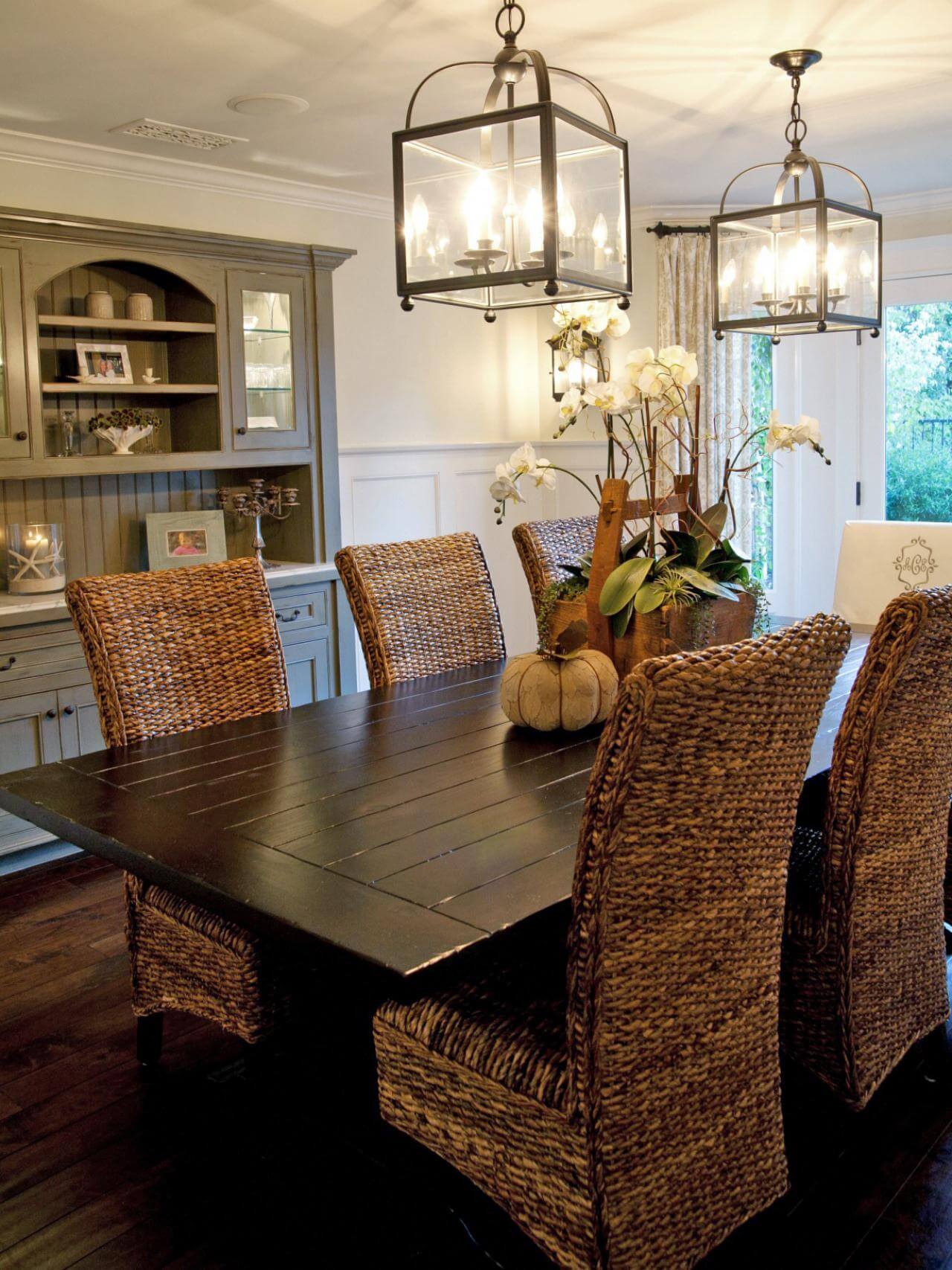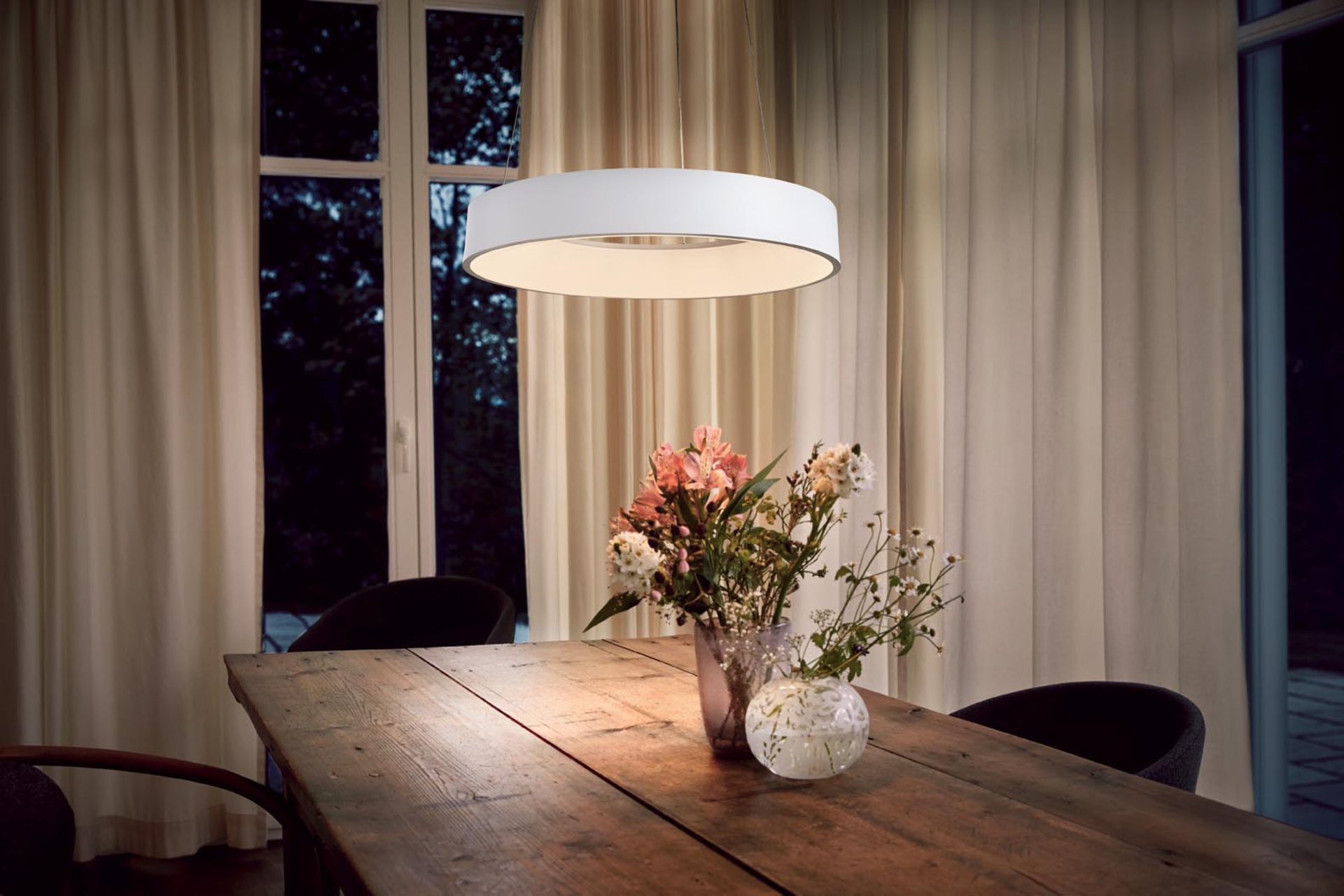If you've noticed your dining room lights flickering, you're not alone. Flickering lights are a common problem in many homes, and they can be frustrating to deal with. Not only can they be annoying, but they can also be a sign of a larger electrical issue. In this article, we'll explore the common causes of flickering lights and provide solutions to help you fix the problem.Flickering Lights: Common Causes and Solutions
Before we dive into the specific causes and solutions for flickering lights in your dining room, it's important to understand the general steps for fixing this issue. First, you'll want to determine if the flickering is happening in just one light fixture or in multiple fixtures. If it's just one fixture, the problem is likely isolated to that specific light. However, if it's happening in multiple fixtures, it could be a larger issue with your home's electrical system. Next, make sure the light bulbs are securely screwed in and not loose. Loose bulbs can cause flickering. If the bulbs are secure and the flickering continues, try replacing the bulbs with new ones to see if that solves the problem. If the flickering persists, it's time to troubleshoot the issue more thoroughly.How to Fix Flickering Lights in Your Home
If you're experiencing flickering lights in your dining room, there are several potential causes to consider. It's important to note that some of these causes may require the assistance of a licensed electrician. If you're not comfortable working with electricity, it's always best to seek professional help.Troubleshooting Flickering Lights in Your Dining Room
There are several common reasons why your dining room lights may be flickering. These include: 1. Faulty or loose wiring: If the wiring in your dining room is old or has become damaged, it can cause flickering lights. In some cases, the wiring may have come loose from the fixture, causing a poor connection and resulting in flickering. 2. Overloaded circuit: If you have too many appliances or devices connected to the same circuit, it can cause flickering lights. This is especially common in older homes with outdated electrical systems. 3. Faulty light switch: A faulty light switch can also cause flickering lights. The switch may be old or worn out, or it may not be properly connected to the wiring. 4. Dimmer switch compatibility: If your dining room lights are connected to a dimmer switch, the switch may not be compatible with the type of bulbs you're using. This can cause flickering or even buzzing sounds. 5. Loose light fixture: If the light fixture itself is loose or not secured properly, it can cause flickering lights. This is a common issue with ceiling fixtures that may become loose over time.Why Are My Dining Room Lights Flickering?
Now that we've covered some of the common causes of flickering lights, let's explore some solutions to help you stop the flickering in your dining room.How to Stop Your Dining Room Lights from Flickering
As mentioned earlier, some electrical problems may require the assistance of a professional electrician. These include issues such as faulty wiring, overloaded circuits, and faulty light switches. If you suspect any of these issues may be causing your flickering lights, it's best to seek professional help to avoid potential safety hazards.Common Electrical Problems That Cause Flickering Lights
If your light fixture is loose or damaged, it may be necessary to replace it. This is a relatively simple process, but if you're not comfortable doing it yourself, it's best to hire a professional. To replace a light fixture, you'll need to first turn off the power to the fixture at the circuit breaker. Then, remove the old fixture and disconnect the wiring. Install the new fixture following the manufacturer's instructions, and make sure all connections are secure. Finally, turn the power back on and test the new fixture to ensure it's working properly.How to Replace a Flickering Light Fixture
If you're in the market for new dining room lighting, there are a few things to keep in mind to avoid flickering issues in the future. 1. Consider the type of bulbs: LED bulbs are known to be more energy-efficient and have a longer lifespan than traditional incandescent bulbs. They are also less likely to flicker. Consider switching to LED bulbs if you're experiencing frequent flickering with traditional bulbs. 2. Check the compatibility with dimmer switches: If you plan on using a dimmer switch for your dining room lights, make sure the switch is compatible with the type of bulbs you're using. Some LED bulbs may require specific dimmer switches, so be sure to check the packaging or consult with a sales associate before purchasing. 3. Invest in quality fixtures: Cheap or poorly made light fixtures may be more prone to flickering. It's worth investing in higher-quality fixtures to avoid this issue.Tips for Choosing the Right Dining Room Lighting
If you're experiencing flickering with your dimmable dining room lights, it may be time to install a new dimmer switch. This is a relatively simple process, but if you're not comfortable working with electricity, it's best to hire a professional. To install a dimmer switch, you'll need to turn off the power to the switch at the circuit breaker. Remove the old switch and disconnect the wiring. Install the new switch following the manufacturer's instructions, and make sure all connections are secure. Finally, turn the power back on and test the switch to ensure it's working properly.How to Install Dimmer Switches for Flicker-Free Dining Room Lighting
If you've recently switched to LED bulbs and are experiencing flickering, there are a few things you can do to troubleshoot the issue. 1. Check the dimmer switch: As mentioned earlier, not all LED bulbs are compatible with all dimmer switches. If you're using a dimmer switch, make sure it's compatible with the LED bulbs you're using. 2. Replace the bulb: In some cases, the flickering may be caused by a faulty bulb. Try replacing the bulb with a new one to see if that solves the problem. 3. Contact the manufacturer: If the flickering continues, it's possible that the LED bulbs are not compatible with your fixtures. Contact the manufacturer for further assistance. Hopefully, these solutions have helped you fix the flickering lights in your dining room. Remember, if you're not comfortable working with electricity, it's always best to seek professional help. With the right troubleshooting and proper installation of fixtures and switches, you can enjoy flicker-free dining room lighting for years to come.How to Troubleshoot Flickering LED Lights in Your Dining Room
The Importance of Proper Lighting in House Design

Creating the Perfect Ambiance
 Proper lighting is an essential element in house design, as it not only serves the practical purpose of providing illumination, but also plays a crucial role in creating the perfect ambiance for any space. This is especially true for the dining room, where the right lighting can enhance the dining experience and set the mood for a meal. However, when your
dining room light is flickering
, it can be quite distracting and take away from the overall aesthetic of the space.
Proper lighting is an essential element in house design, as it not only serves the practical purpose of providing illumination, but also plays a crucial role in creating the perfect ambiance for any space. This is especially true for the dining room, where the right lighting can enhance the dining experience and set the mood for a meal. However, when your
dining room light is flickering
, it can be quite distracting and take away from the overall aesthetic of the space.
Impact on Visual Appeal
 An important aspect of house design is the visual appeal of a space. Lighting can greatly impact the overall look and feel of a room, and a flickering light can disrupt the harmony and flow of the design. It can make the space feel unfinished or uninviting, and it can also be a safety hazard if the flickering is caused by faulty wiring or a damaged light fixture.
Regular maintenance and timely repairs
are crucial in ensuring that your dining room light not only functions properly but also adds to the overall aesthetic of the space.
An important aspect of house design is the visual appeal of a space. Lighting can greatly impact the overall look and feel of a room, and a flickering light can disrupt the harmony and flow of the design. It can make the space feel unfinished or uninviting, and it can also be a safety hazard if the flickering is caused by faulty wiring or a damaged light fixture.
Regular maintenance and timely repairs
are crucial in ensuring that your dining room light not only functions properly but also adds to the overall aesthetic of the space.
Creating a Welcoming Atmosphere
 The dining room is often the heart of a home, where families and friends gather to enjoy meals and create lasting memories. Lighting plays a crucial role in setting the mood and atmosphere in this space. When the light is flickering, it can create a sense of unease and ruin the cozy and welcoming atmosphere that a dining room should have.
Investing in quality lighting fixtures
and keeping them in good condition can help maintain the warm and inviting atmosphere of your dining room.
In conclusion, proper lighting is a crucial aspect of house design, and the dining room is no exception. A flickering light can not only be a distraction but also negatively impact the visual appeal and ambiance of the space. Regular maintenance, timely repairs, and investing in quality lighting fixtures are key in ensuring that your dining room light enhances the overall design of your home and creates a welcoming atmosphere for all who enter.
The dining room is often the heart of a home, where families and friends gather to enjoy meals and create lasting memories. Lighting plays a crucial role in setting the mood and atmosphere in this space. When the light is flickering, it can create a sense of unease and ruin the cozy and welcoming atmosphere that a dining room should have.
Investing in quality lighting fixtures
and keeping them in good condition can help maintain the warm and inviting atmosphere of your dining room.
In conclusion, proper lighting is a crucial aspect of house design, and the dining room is no exception. A flickering light can not only be a distraction but also negatively impact the visual appeal and ambiance of the space. Regular maintenance, timely repairs, and investing in quality lighting fixtures are key in ensuring that your dining room light enhances the overall design of your home and creates a welcoming atmosphere for all who enter.











































)






















































